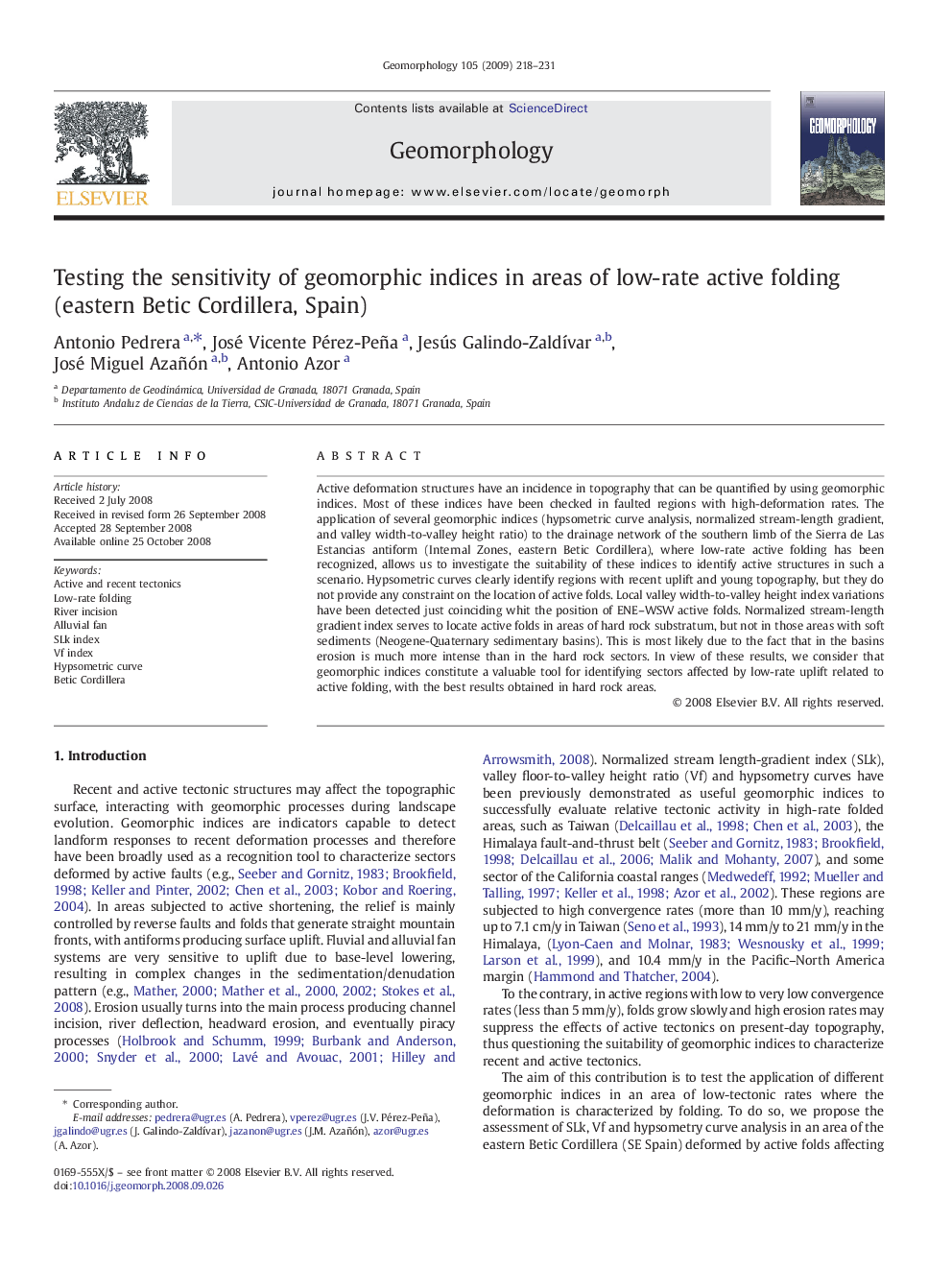| Article ID | Journal | Published Year | Pages | File Type |
|---|---|---|---|---|
| 4686444 | Geomorphology | 2009 | 14 Pages |
Active deformation structures have an incidence in topography that can be quantified by using geomorphic indices. Most of these indices have been checked in faulted regions with high-deformation rates. The application of several geomorphic indices (hypsometric curve analysis, normalized stream-length gradient, and valley width-to-valley height ratio) to the drainage network of the southern limb of the Sierra de Las Estancias antiform (Internal Zones, eastern Betic Cordillera), where low-rate active folding has been recognized, allows us to investigate the suitability of these indices to identify active structures in such a scenario. Hypsometric curves clearly identify regions with recent uplift and young topography, but they do not provide any constraint on the location of active folds. Local valley width-to-valley height index variations have been detected just coinciding whit the position of ENE–WSW active folds. Normalized stream-length gradient index serves to locate active folds in areas of hard rock substratum, but not in those areas with soft sediments (Neogene-Quaternary sedimentary basins). This is most likely due to the fact that in the basins erosion is much more intense than in the hard rock sectors. In view of these results, we consider that geomorphic indices constitute a valuable tool for identifying sectors affected by low-rate uplift related to active folding, with the best results obtained in hard rock areas.
